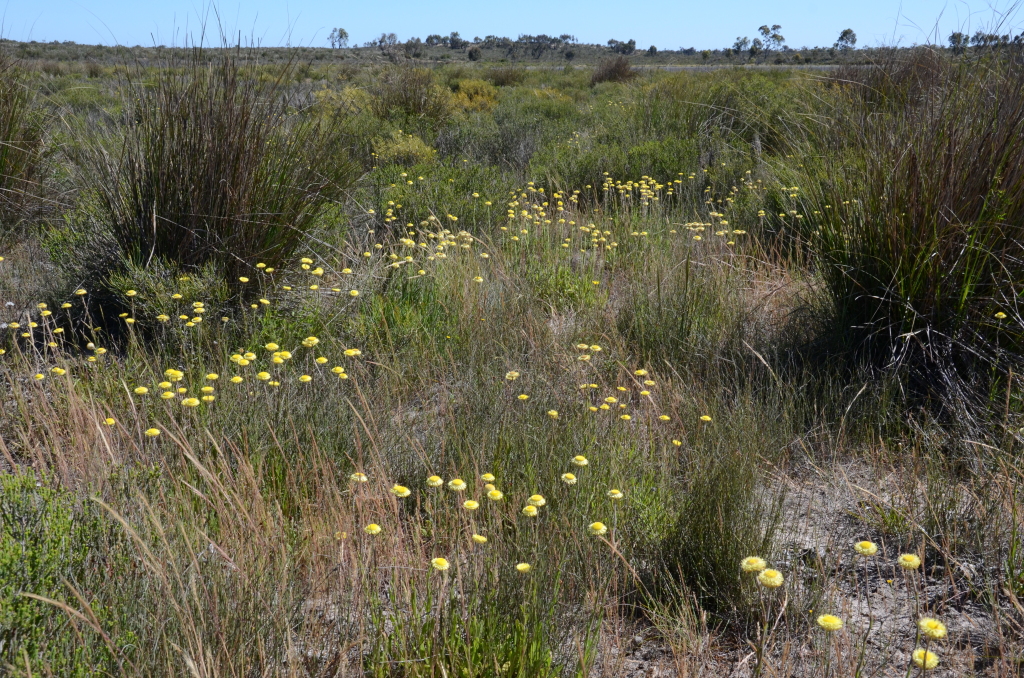Coronidium
Annual or perennial herbs or shrubs, usually with some glandular hairs. Leaves cauline, petiolate or sessile, alternate, lower ones sometimes opposite, entire. Capitula broad-campanulate or hemispherical, terminal, in diffuse groups of up to 8, or solitary, subsessile or pedunculate; involucral bracts in several series, unequal, papery, with or without a herbaceous basal claw, mostly yellow or white; intermediate involucral bracts longest; receptacle flat, naked, pitted. Florets all bisexual or some or all outer florets female, yellow; corolla 5-lobed (females 2–4-lobed); anthers tailed at base; style with truncate, acute or swollen branches. Cypselas obloid, glabrous, pitted; pappus of barbellate bristles, free or united in a ring at base.
An endemic Australian genus of 17 species.
Coronidium was erected as part of an ongoing effort to accommodate Australian species that were once misplaced in Helichrysum, see notes under that species (Wilson 2008). Recent studies using analyses of DNA data have shown Coronidium to be composed of several separate lineages, including three that are most closely related to Xerochrysum and another that is most closely related to Chrysocephalum (Schmidt-Lebuhn et al. 2015; Collins et al. 2022). The latter group (the C. scorpioides complex) clearly requires reclassification, while the placement of the three clades related to Xerochrysum remains unresolved and there appear to be good arguments for either splitting groups into segregate genera or lumping some or all these groups into Xerochrysum. Leucozoma T.L.Collins has recently been described for a clade which includes C. elatum and related species. However, this is not being followed here due to ambiguity around interpretation of molecular data together with the lack of strong morphological characters to delineate this genus. Another of these clades comprises of Helichrysum leucopsideum, Coronidium adenophorum and C. waddelliae. Helichrysum leucopsideum clearly needs to be reclassified. However, this species is currently retained within Helichrysum until its generic placement is resolved, as a combination in Coronidium may be short-lived.
The C. scorpioides complex was revised by Walsh (2014).
 Spinning
SpinningWalsh, N.G. (2014). A revision of the Coronidium scorpioides (Asteraceae: Gnaphalieae) complex.. Muelleria 32: 16–33.

